Reply To:
Name - Reply Comment
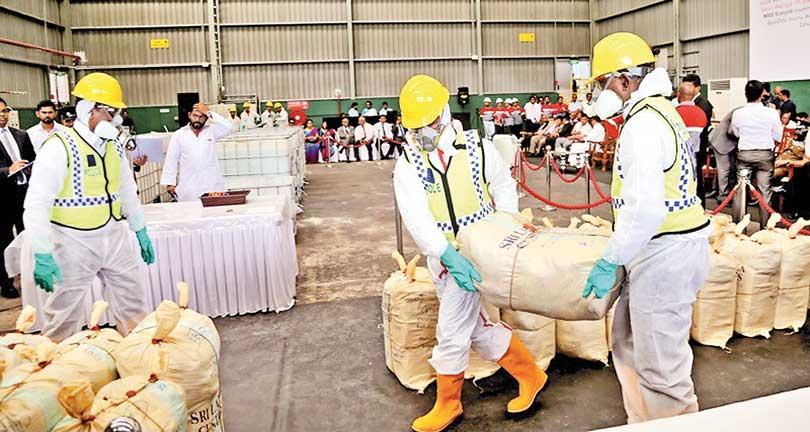
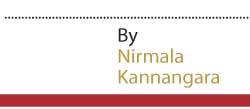
The Attorney General’s Department, the Police Special Task Force and the Police Narcotic Bureau are in discussion with the Judiciary to obtain approval to destroy a large haul of narcotics on April 1, the Police Narcotics Bureau told the Daily Mirror. However, the recently detected heaves of heroin and cocaine that shocked the nation will not be included in this stock. This haul of narcotics is said to be bigger than what was destroyed last year.
Meanwhile, refuting the allegations levelled against Sri Lanka Police for re-issuing the seized drugs back to the society after the conclusion of the court procedure, highly reliable police sources, on condition of anonymity, said that not even a milligram of what was detected was released to the society. The source added that the general public is not aware of the effort the Police Narcotic Bureau (PNB) has taken with the concurrence of the judiciary and the Attorney General’s Department to dispose these dangerous drugs to ensure this country is free of narcotics.
“There are no loopholes in the law which would aid the release of seized drugs to be re-circulated in the country. The detected drugs are kept in the custody of the Government Analysts (GA) Department until the judicial proceedings conclude and then destroyed in the presence of a High Court Judge, court registrar and officers of the National Dangerous Drug Control Board and in some cases representatives of the GA Department,” sources claimed.
According to reliable sources from the Police Narcotics Bureau (PNB), the stock awaiting disposal next week, consists of over 1400kg of heroin, nearly 1000kg of cocaine and 1000kg of kerala ganja. They will be liquefied before they are heated in a 5000°C kiln and make it evaporate at the INSEE Cement Plant in Puttalam- formally known as Holcim Cement plant. This will cost the Ministry of Defence millions of rupees.
The value of these narcotics has been estimated at several billion rupees. The street value of dangerous drugs as of March 15, 2019 is as follows– 1Kg of heroin is Rs.12 million, 1Kg of cocaine is Rs.18 million and 1Kg of kerala ganja is Rs.150,000.
On the directives of President Maithripala Sirisena, the date to destroy the second consignment of drugs has been fixed for April fool’s day- as narcotics are used only by the fools in the society. “Unless there isn’t a demand for these hazardous drugs, the drug traffickers cannot become super-rich. It is because of these foolish drug addicts, the traffickers’ traffic drugs to the country and become billionaires overnight while the addicts become poorer,” sources said on condition of anonymity
The availability of these drugs in Sri Lanka is less, hence the demand is high. So does the selling price. This is a lucrative ‘business’. Most of the traffickers are fishermen
The consignment of cocaine, which was destroyed on January 15, 2018 in the presence of the President, Prime Minister and several other Cabinet Ministers, had been detected in a container load of timber en route to India. Following a tip off, it was detected by Sri Lanka Customs in December 2016. The weight of the detected haul was 928. 229Kg which was worth Rs.66 billion. It too had been destroyed in the same high temperature cement plant in Puttalam. The Ministry of Law and Order had to bear the disposal charges which amounted to Rs.45 million.
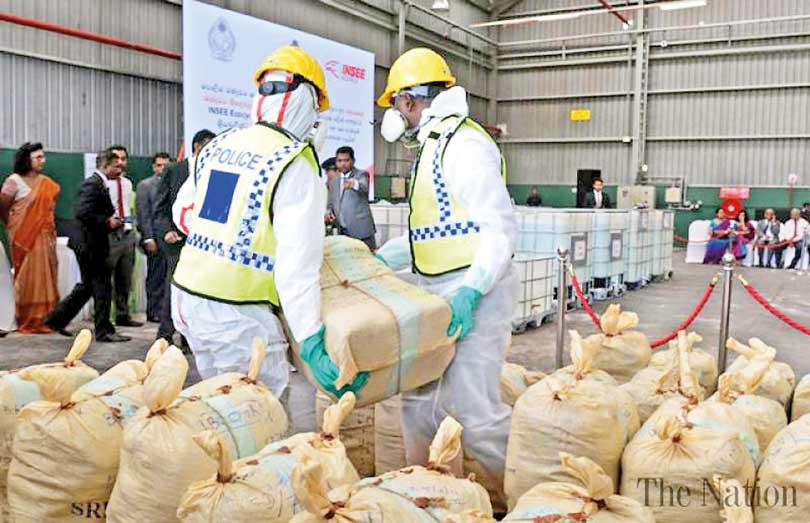
Once a detection is made by the police, by law, facts have to be reported to the courts immediately and the seized substance is produced, the latter then becomes the property of the court. It will then be sent to the Government Analysts Department for Scientific Analysis.
“There are allegations that these detected drugs are released and it is re-circulated in the society with the help of certain politicians. True, all the drug traffickers receive political patronage. If not for the political support, these drug dealers cannot survive in this ‘trade’. But once a detection is made, there is no way the politicians can influence the police to get the seized drugs released. Soon after the arrest, the police have to produce the drugs in court which will then become the property of the court. Until it is sent to the GA’s Department, it will be kept in the court production room or in rural areas if there are no proper places in courts, in police production rooms. After the case concludes, every single milligram that was in detention is destroyed. Although these details are not made public, records on the destroyed narcotics are with the relevant law enforcement authorities.
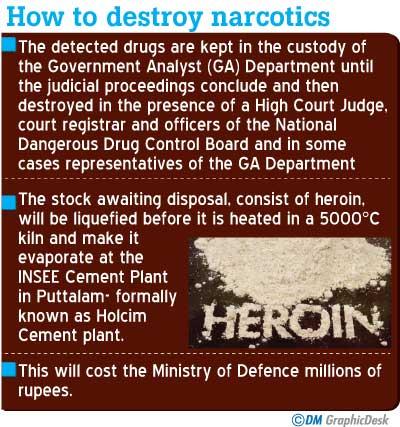 Even if, the suspects do get bail after the trials, the stock of narcotics will remain under the GA’s custody until it is destroyed with the concurrence of the court,” sources claimed. According to the sources, the weight of the substance, the private identification seals of the officers who conducted the raids and the left thumb impression (LTI) of the suspects are placed on the wax that is used to seal the parcel/s of the seized stock.
Even if, the suspects do get bail after the trials, the stock of narcotics will remain under the GA’s custody until it is destroyed with the concurrence of the court,” sources claimed. According to the sources, the weight of the substance, the private identification seals of the officers who conducted the raids and the left thumb impression (LTI) of the suspects are placed on the wax that is used to seal the parcel/s of the seized stock.
The sources further described as to why the detected substances are sent to the Government Analyst Department and why the LTI, the weight of what was seized in the possession of the suspects and the private seals of the detectors are kept on the wax when it is sealed.
“Once the LTI of all suspects, the weight of the substance and the private seals of the detectors are placed on the wax, the suspects, on a later date, cannot claim that the produced drugs were not detected in their possession. The reason to send the seized substance to the GA’s Department is for scientific analysts to obtain the purity percentage of the drugs. The preliminary tests are carried out in the presence of PNB officers to identify the drug. It takes two-three months for the GA to produce a detailed report to courts. The report gives what the percentage of the actual drug was. Their report is final and cannot be challenged by any party. Based on the purity percentage, the charges are levelled against the accused by the Attorney General’s (AG) Department,” sources added.
The sources further explained why a decision cannot be taken to destroy these drugs until the case concludes. “We keep them for our future reference during the court proceedings. There are instances when even the suspects request us to retain the detected drugs till the case concludes. After the GA report is issued, we refer it to the AG’s Department for their instructions. If the purity of the drug that was seized is high (if the purity percentage of the seized heroin or cocaine is 2gms or over and cannabis 500gm or more) the suspects are indicted in the High Court (HC). It was only after the trial in the HC that they are destroyed in front of the said representatives. This process is transparent,” sources said.
Earlier these drugs had been diluted in water and was either dumped in the mid seas, mixed to the soil or flushed in toilets. As these methods were harmful to the environment, it was later decided to heat the liquidated drugs in a high temperature kiln and release it to the thin air.
We made a proposal to the Attorney General to obtain approval to destroy whatever we seize soon after the suspects are indicted in the HC
“We made a proposal to the Attorney General to obtain approval to destroy whatever we seize soon after the suspects are indicted in the HC. Although AG’s Department is agreeable to this proposal, we are yet to discuss about it with the HC. If this system materialises, we do not have to wait to destroy these drugs until the case concludes,” sources said.
The sources further claimed that although the drug is destroyed, the cover /bag in which they were stowed is not destroyed.
According to the sources, if the purity level of the seized heroin or cocaine is over 2gms, the punishment would be either the death penalty or life imprisonment.
“The availability of these drugs in Sri Lanka is less, hence the demand is high. So does the selling price. This is a lucrative ‘business’. Most of the traffickers are fishermen. Trafficking illegal drugs to the country is a big network and the dealers in other countries send consignments to their agents here, mostly through the sea routes and in fishing boats. Even within the four walls of the prison, drug deals are taking place over the phone without any hindrance. Unless we curb the demand, the supply increases and the situation would become more dangerous. That is why we have initiated rehabilitation and awareness programmes mostly amongst schoolchildren. These programmes are conducted to stop the future generation getting addicted which could help to reduce demand. According to statistics, out of the country’s population, only less than 2% are addicted to narcotics and this issue has become a menace to the country,” sources claimed.
The statistics show how the dealers abuse psychotropic substances by mixing with heroin and cocaine to earn more money. The abuse of psychotropic drugs that are available have seen a drastic rise and had become a serious and dangerous issue. Out of all illegal drugs, heroin remains the commonly used drug as cocaine is very expensive, and most of the addicts cannot afford it.
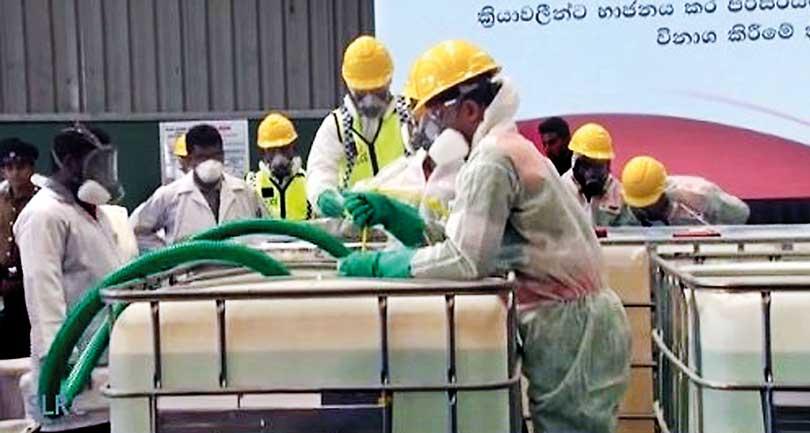
“As the demand is higher, the price of the actual drug rises and to make a profit, the drug distributors mix them with cheap sedatives. Though heroin is not produced in Sri Lanka the domestic market for this drug has increased remarkably over the years. Airports and sea ports have being recognised as transit points. The drug traffickers make use of fishing boats to transport drugs to the country. Sri Lanka has become a transit hub in South Asia.,” sources claimed.
The sources further said how these illegal drug businesses flourished with the help of politicians. “Before and after the open economy was introduced in 1977 a very few numbers of Tamils and Muslim traders were involved in this business in a small scale. At that time there were no cocaine or heroin, but there would have been cannabis and similar drugs that stimulated energy. This was used only by the labourers in Pettah. After a hectic day they used these drugs to revive their lost energy. With the introduction of the preferential voting system the then politicians in Colombo knew that they could get more votes if these drug traffickers are protected. Hence not only the dealers, but also the addicts became supporters of these politicians. Only a few Tamil and Muslims were engaged in this trade till 2006 before the politicians got involved in this business to amass quick wealth,” sources alleged.
According to reliable police sources, by 2006, certain politicians at the helm together with their kith and kin, got these Tamil and Muslim drug traders arrested in the guise of having contacts with the LTTE. Thereafter they were eliminated and even the houses they were living were demolished claiming them to be threats to national security. The drug business was then ‘handed over’ to their Sinhalese friends who in turn looked after the interests of these politicians and their families from the money they earned through this ‘business’.
“That was how Sri Lanka became a drug trafficking hub in South Asia with the assistance of politicians. If the statistics of narcotics detection after 2006 is compared, anyone can come to a conclusion as to how politicians have safeguarded the drug traffickers,” sources alleged.
Official data obtained from STF and PNB shows how these two law enforcement authorities have carried out successful raids and had seized large hauls of narcotics from 2015 up to March 15, 2019 when compared to the statistics available between 2010 to end of 2014.
If not for the political support, these drug dealers cannot survive in this ‘trade’. But once a detection is made, there is no way the politicians can influence the police to get the seized drugs released
The PNB after a successful raid on a tip off was capable of seizing the biggest ever heroin detection in Sri Lanka on December 31, 2018: a quantity of 270. 030kg in a hideout at Dehiwela Colombo. “The main trafficker was a foreign lady and no sooner two Bangladeshi citizens were arrested with the heroin, we got the foreign trafficker’s Ratmalana residence searched. There, another 31kg was detected. With the arrest of the Bangladeshi citizens, she has left the country,” sources said.
On December 5, 2018, another haul of heroin weighing 232kg had been detected while on January 22, 2018, two US, one Afghan and two Sri Lankans had been arrested at Kollupitiya with 95kg of heroin. “The latest was the arrest of nine Iranians in Beruwala on Sunday March 24. There were 109kg of heroin and the raid had been conducted by the STF,” sources added.
Meanwhile, the use of psychotropic substances has arisen as a substitute to heroin or cocaine. ‘The younger generation use these tablets to sedate themselves. Last year, the PNB was able to seize 15 million tramadol tablets in a transit container,” sources added.
According to STF reports, from 2015 to March 15, 2019, 851kg 93g and 297 mg of heroin had been detected between 2010 to 2014. Only 92kg 280gm and 388mg had been taken into custody.
From 2015 to March 15, 2019, 85kg 529gm and 646mg of cocaine had been detected while between 2010 to 2014, cocaine had not been detected. The STF had filed 1668 cases against 1743 people for the possession of heroin and cocaine from 2015 to March 15, 2019 while, from 2010 to 2014 only 366 cases have been filed against 423 suspects for having heroin and cocaine in their possession.
Meanwhile, according to PNB statistics, in 2018, they have detected 669kg 310gm and 928mg of heroin and 18kg 266gm 400 mg of cocaine. In 2017, 23kg 598gm and 548mg of heroin and 2kg and 50gm of cocaine have been detected.
All attempts made to obtain a comment from Director Police Narcotic Bureau SSP T.C.A. Dhanapala proved futile.